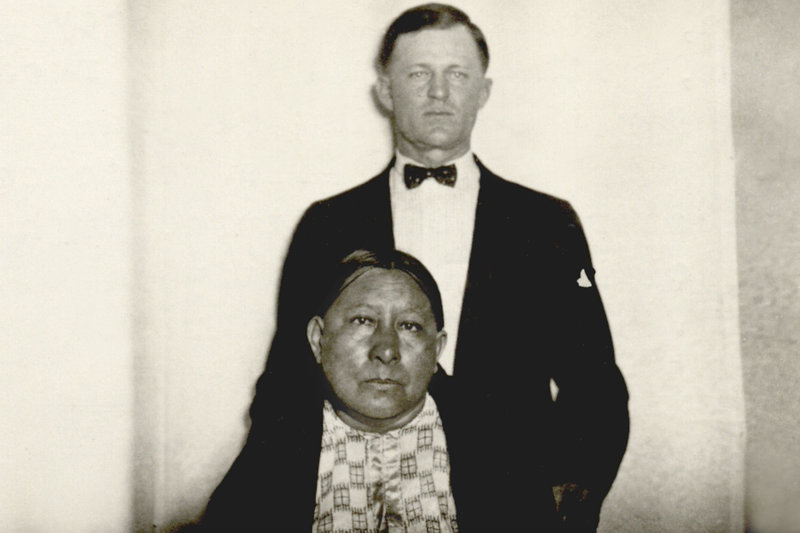Killers of the Flower Moon

I have never been a believer in the goodness of people.
Folks who go around saying “people are basically good,” have obviously come from some alien planet and have never met an authentic human being or they are massively self-deluded. We humans may do nice things once in a while, but we didn’t climb down from the trees and take over the world by being nice. Not then, not now.
What helps us transcend our base nature is culture and self-control. Culture at its best helps us live to a standard of decency, helps us to cooperate with one another and to overcome our reptilian instincts. At its worse, it inspires just the opposite.
One of the things that makes this depressingly clear is a well-researched book by author David Grann titled: Killers of the Flower Moon. It tells the story of the Osage Indians in 1920s Oklahoma. It’s one of those books that you read and then several days later you’re driving down the street or shopping for groceries and you’re still thinking about it. It’s a good book, but it is disturbing.
When the federal government in the 1870s decided to relocate the Osage Indians to a designated barren area in northern Oklahoma, the Indians negotiated a deal to retain the mineral rights. The government wanted to wean the Osage from their traditional culture and introduce them to private ownership of property, so the area was divided into privately owned tracts among the members of the tribe. Children were forced to undergo education to teach them how to conduct themselves in a modern English-speaking society. And since Indians were still considered savages, the Indians’ financial decisions and investments were to be dictated by white trustees.
But then the Indians struck it rich. In the early 20th Century oil was discovered beneath their ground and soon the Osage tribal members constituted one of the richest societies on the planet.
Although by the 1920s America was a relatively modern society, in the interior Western states the frontier mentality was still very much alive. White trustees – prominent ranchers, merchants, attorneys, physicians, and other respectable folks – oversaw the Indian’s finances and wealth. The trustees, who were supposed to protect the naïve Indians from making stupid choices, instead stole from the Indians in big ways and small – overcharging for goods and services and sometimes cooking the books. They also conspired with young male relatives to romance and marry Indian women. Then one by one they would kill off the members of the family until the white husband would be the only heir to all the oil wealth.
The trustees were aided in this practice by local lawmen, who looked the other way, physicians who would supply drugs to slowly poison members of rich Indian families, and judges who always sided with prominent white men over Indians.
In the bloody history of the 20th Century, the killing of Indians in Osage County might be considered an ugly footnote. At the most, there were probably only a hundred or so Indians killed.
What happened to the Osage Indians in the 1920s obviously doesn’t compare with the genocide of Jews in Germany, the killing of Armenians by the Turks, the bloody purges of political dissidents in the Soviet Union under Stalin and in China under Mao, or the wide-spread killing of educated Cambodian people by the Khmer Rouge.
Two things make the tragedy of the Osage Indians different. One is that it happened in America. And two is that it was a community affair, with lots of people who either participated in plots to kill entire Indian families or knew what was going on and looked the other way.
The killing of Indians was finally broken up by the newly formed Federal Bureau of Investigation. A team of investigators led by former Texas Ranger Tom White, worked around the clock to unravel the murders despite bureaucratic interference from the FBI’s young boss, J. Edgar Hoover.
In the end, some ringleaders were tried for murder and imprisoned, but many of the murders went unsolved and most of the participants escaped punishment. The ugly history of that time remains a bitter memory among descendants of the victims.
The book is disturbing. Civilization should make us better than this, and usually it does. But sometimes, it merely helps us excuse such behavior.
Osage County in Oklahoma during the 1920s was one of those times.
Do you have a dissenting opinion or any opinion at all on the subject? Contact me at george@georgeleecunningham.com and let me know. Meanwhile, you can always subscribe and get an email reminder of blog postings. Your name will not be shared and you may cancel at any time.
